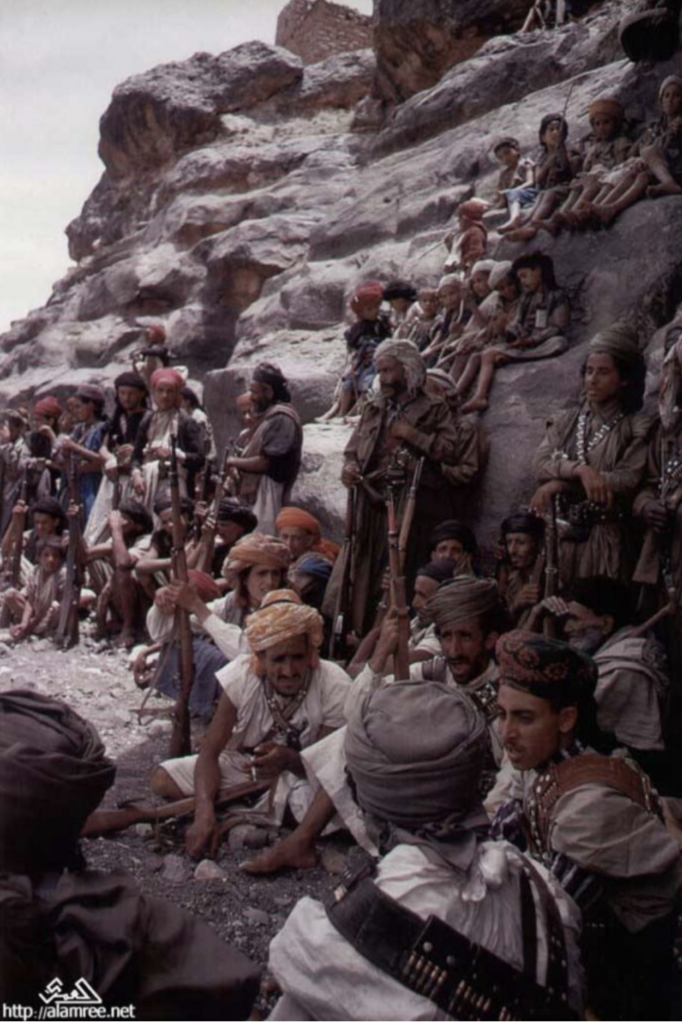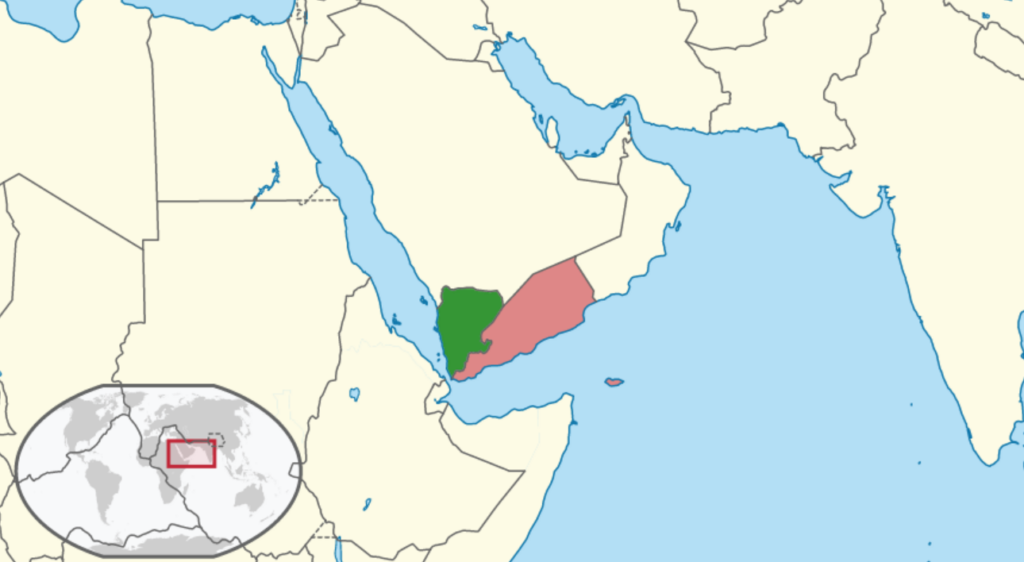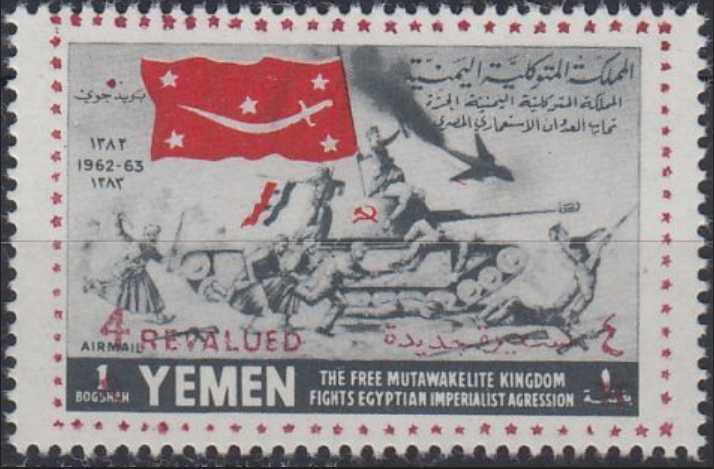North Yemen: Divisions before the Yemeni Civil War

By Liam Nagle / Arab America Contributing Writer
When one thinks about a divided Yemen, they might think about its ongoing, devastating, and complicated civil war. However, did you know that there was another time when it was divided? Yemen didn’t always exist as a single entity, as it only recently unified in 1990! Before then, it was actually two separate and distinct states – one based in the north and west, and the other based in the south and east. The main reason for this division comes from their colonial history; while southern Yemen was controlled by the British Empire, northern Yemen was instead controlled by the Ottoman Empire. Today, we will go into the history of North Yemen under both the Kingdom of Yemen and the Yemen Arab Republic.
The Kingdom of Yemen under Imam Yahya

Northern Yemen, before its official independence in the 20th century, was controlled by a variety of groups. Among these were the imamate – a religious and political body that was ruled by imams belonging to the Zaidi branch of Shia Islam. However, through the Middle Ages and into the modern era, the imamate had its power substantially challenged by the Ottoman Empire, which also controlled large swaths of Northern Yemen. But when the Ottoman Empire began to fall apart after World War One, the empire signed a treaty with the British called the Armistice of Mudros, which stipulated that all Ottoman forces were to withdraw from areas around Yemen. With the Ottomans absent, a power vacuum developed; numerous smaller states were formed, and immediately began fighting each other for supremacy. The state that would emerge victorious would be the imamate led by Imam Yahya. After having proclaimed the establishment of the Kingdom of Yemen in Sana’a, he launched numerous attacks against the rival factions, the British, and the Saudis. While the attacks against the British and Saudis would fail, he would be successful in bringing much of Yemen under his control.
Following these victories, Yaman under Imam Yahya pursued an isolationist policy. An on-and-off rivalry with the British and Saudis ensued, although Yemen would not go to war with either country after losing land to the Saudis in 1934. However, the isolationist policy was also accompanied by a rise in authoritarianism. The Kingdom of Yemen was, of course, autocratic – and Imam Yahya’s approval was needed even in the most ordinary situations. Nevertheless, this authoritarianism would not save his life. In 1948, a coup attempt led by the rival al-Waziri clan was successful in assassinating Imam Yahya and taking Sana’a. The al-Waziris then placed their own ruler on the throne, Abdullah bin Ahmad al-Wazir. But his rule would only last a few weeks – Imam Yahya’s son, Ahmad bin Yahya, gathered support outside the city before deposing and executing Abdullah bin Ahmad al-Wazir.
The Struggle with Egypt

The rule of Ahmad bin Yahya would be like his fathers. He pursued isolationist and authoritarian policies, engaging in some territorial disputes with the British but failing to improve his position. However, during his reign, Yemen came under increasing pressure from the newly-formed United Arab Republic led by Egypt. Yemen feared for its security, particularly from the Saudi Arabians to the north. As such, although disliking the ideology of Pan-Arabism, when Yemen was offered to join a defensive pact with the UAR, Yemen accepted and became a member of the United Arab States. But this alliance wouldn’t last long. After the dissolution of the United Arab Republic, the United Arab States also became defunct, allowing for Yemen to leave the union.
But pressure from Egypt wouldn’t stop there. A portion of the Yemeni military drew inspiration from the Free Officers and wanted to establish an Arab Nationalist state in Yemen. Many of these military officers were trained by the Egyptian military and waited for a chance to strike. When Ahmad bin Yahya died and was succeeded by his son, Muhammad al-Badr, they initiated a coup d’etat and forced him to flee northwards. But Muhammad al-Badr wasn’t finished – after fleeing into northern Yemen, he gathered the support of the local tribes there who supported his rule. As such, a civil war broke out between the pro-monarchy royalists, and the anti-monarchy republicans. The royalists were supported by Saudi Arabia, Israel, and Britain, but their support would be nothing compared to Egypt’s support for the republicans. Egypt sent as many as 70,000 troops to aid the Yemen Arab Republic, but in spite of this, the war soon devolved into a stalemate by the mid-1960s. Egypt’s disastrous strategy during the war resulted in many terming the North Yemeni Civil War as “Egypt’s Vietnam”. Only after 8 years of fighting and around 100,000-200,000 casualties did the two sides finally come to a peace agreement. This peace agreement did result in the dissolution of the Kingdom of Yemen, but its leaders during the civil war would join the government of the Yemen Arab Republic.
The Yemen Arab Republic

By the end of the civil war, Britain had withdrawn from southern Yemen, allowing for the establishment of the People’s Democratic Republic of Yemen. The relations between the two states were relatively cordial but unstable, resulting in some low-level conflicts such as the Yemenite War of 1972. However, after this conflict, the two states pledged that they would mutually work towards unification. Another conflict would break out in 1979, only stopped by the Arab League, and resulting in both sides reaffirming their hopes for unification.
In 1988, both sides finally began preparations for unifying. They began discussions between one another, demilitarized their border, and allowed for nationals to travel from one state into the other. Finally, official Yemen unification was proclaimed on May 22nd 1990, becoming finalized in 1992. A final conflict broke out between those supportive of unification and those opposed, dubbed the 1994 Yemeni Civil War, but the unionists would win this conflict – resulting in the creation of the Republic of Yemen.
Conclusion
Yemen, even before its ongoing civil war, was divided. North Yemen, after the Ottoman withdrawal, suffered from factionalism before unification under Imam Yahya and the Kingdom of Yemen. The kingdom’s autocratic streak gave it more enemies moving into the mid-1900s, resulting in the devastating North Yemeni Civil War in 1962. Finally, some brief conflicts occurred between north and south Yemen, but the two states were ultimately able to unify in the 1990s. In the ongoing Yemeni Civil War, Yemen is debatably divided along similar lines as it was historically – the Houthis largely control what-was-then North Yemen, and the Yemen Republic and the Southern Transitional Council largely control what-was-then South Yemen. These long-standing divisions show how it’s important to learn and recognize history to understand what occurs today.
Check out our Blog here!








